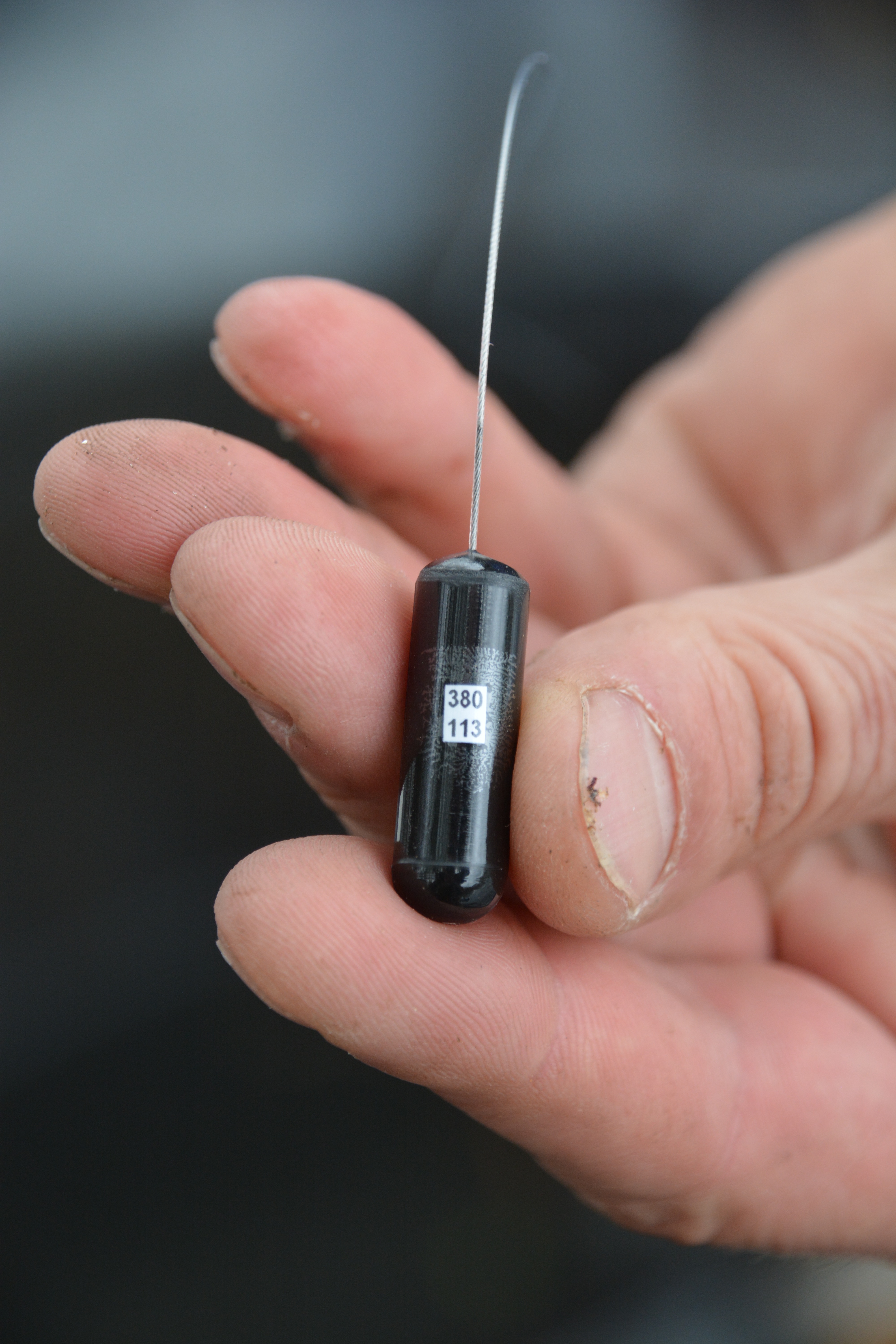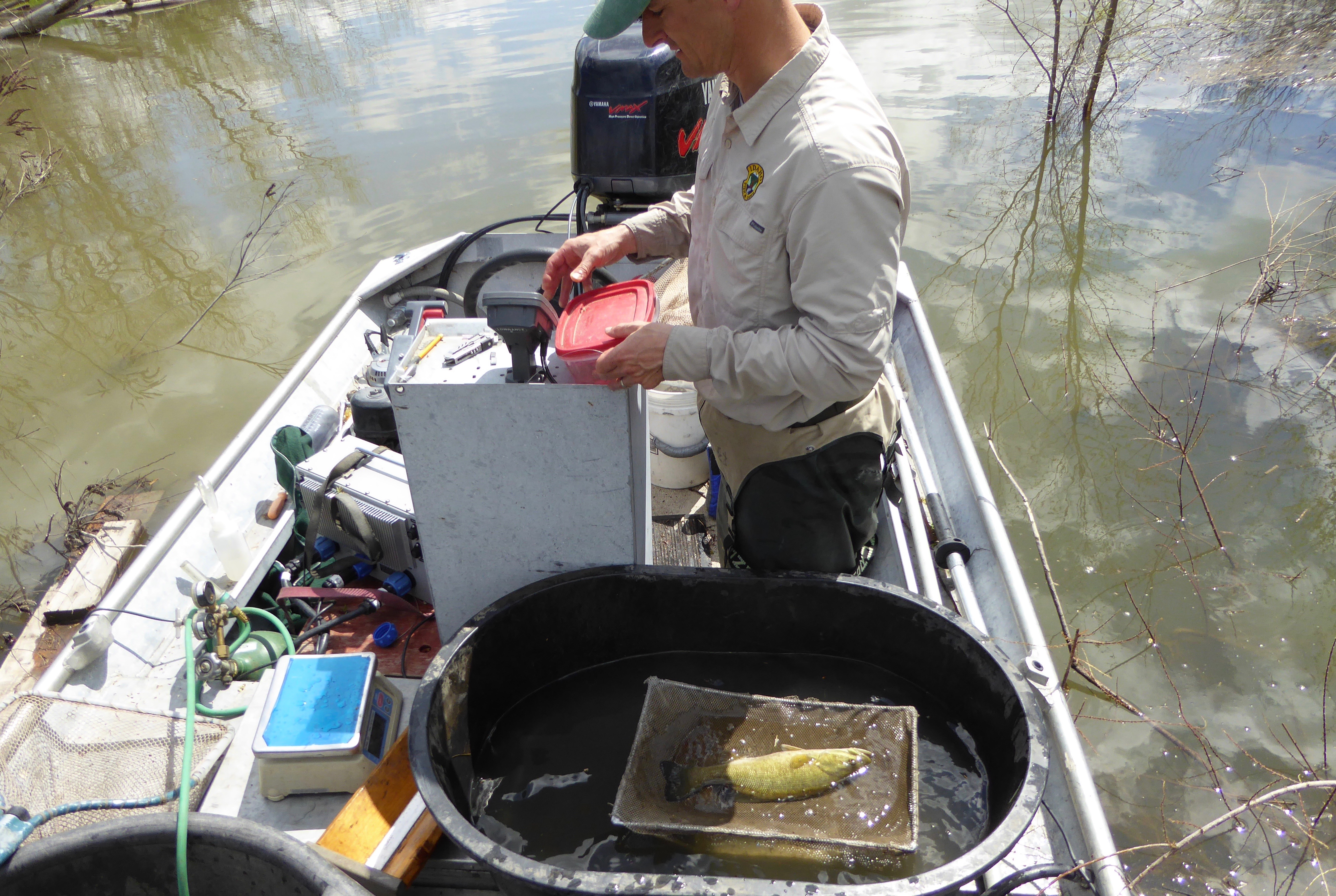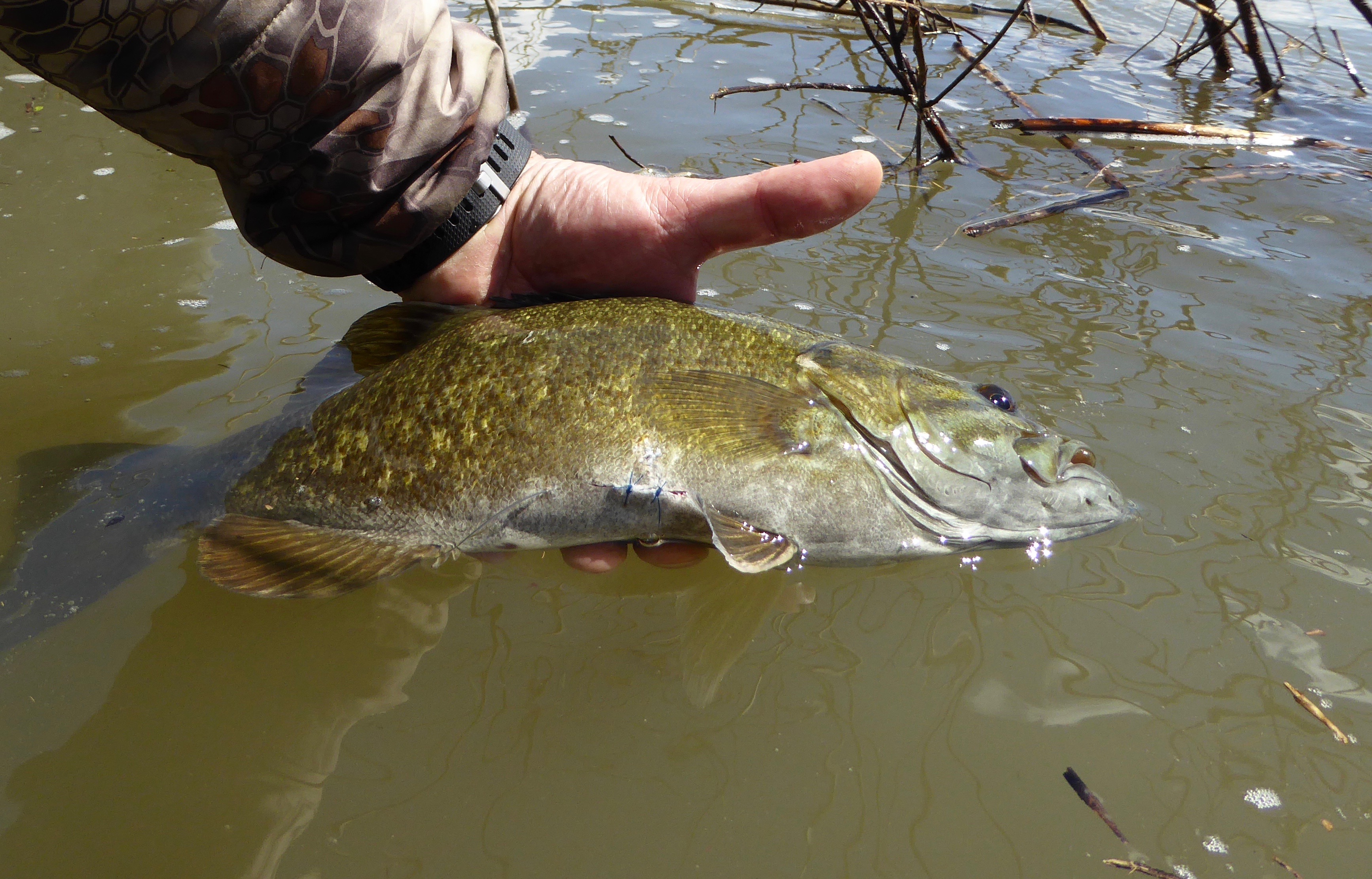
A stunned smallmouth bass emerged from the flood-swollen Snake River. It was a slab by anyone’s standards - 19 inches and 4.5 pounds, mottled bronze with dark bars on its broad sides and as pot bellied as a sumo wrestler.
If you’re wondering “where does a smallmouth like that come from?” Idaho Fish and Game biologists and a University of Idaho graduate student are wondering the same thing, and they’re working to find out.
The bass rose to the surface of the cold water because it was momentarily stunned by an electrical current, then netted, weighed, measured and surgically implanted with a pill-sized transmitter that will send a radio signal to receivers, which will track its whereabouts in the Snake River between Swan Falls Dam and Brownlee Reservoir.

Bass fishing in the river sections between Swan Falls and Brownlee Reservoir is inconsistent, Fish and Game’s Southwest Region Fish Manager Joe Kozfkay said. It's good in some sections and poor in others, and same for tributaries. Biologists want to find out why.
Because of smallmouths' popularity and recreational importance, more information is needed to better manage the fishery. Most of the previous research focused on Brownlee Reservoir, largely due to the popularity of its smallmouth fishery, and also issues related to dam relicensing.
“Brownlee Reservoir is one of the better smallmouth bass fisheries in the West,” Kozfkay said.
By comparison, less is known about the bass upstream of the reservoir and in the Snake River tributaries, such as the Boise, Payette and Weiser rivers. Biologists want to learn whether those smallmouths are one large population, or independent populations, and if different, how should they be managed to enhance and/or protect the existing fishery.

Fisheries managers aren’t expecting any big surprises, or anticipating major changes in current rules for bass fishing, but one never knows until the studies are undertaken.
"While the overall bass population seems to be doing very well, we have some real questions about how much smallmouth move around," said Jeff Dillon, Fish and Game's state fish manager. "Those movement patterns are key to knowing whether different harvest rules might be beneficial in some areas."
Biologists did a similar study decades ago on channel catfish and learned there’s a “giant swirling population” between Swan Falls and Brownlee dams where fish move up and down the river and can easily sustain harvest levels.
Evidence suggests that some smallmouths spawn in tributaries where they may be more susceptible to angler harvest. But is the current level of harvest sustainable, or is it detrimental to the population?
The study will determine ages, growth rates, mortality, age at maturity, and recruitment, then use population simulation models to see how different harvest regulations might affect the Snake’s smallmouth fishery.
Biologists have been capturing smallmouths this spring in different sections of the Snake River, and also in the Boise, Payette and Weiser rivers, and implanting more than 150 of them with tracking transmitters.

Crews will do multiple surveys throughout the year to see if fish seasonally migrate during spring, summer, fall and winter. Smallmouths will also be genetically tested to determine whether populations are interrelated or separate.
Lastly, 1,130 smallmouths have been marked with orange tags with a phone number and website where anglers can report where they caught the fish, and whether they harvested it or released it. Reporting the tag number and location will help biologists know where the fish was caught compared to when and where it was tagged, and how many fish are being harvested.
Based on previous research in Brownlee, biologists know about 25 percent of the legal-sized bass get harvested from that reservoir each year, which Kozfkay said is sustainable without decreasing the overall population.
If biologists determined there was a localized population in the Snake or the tributaries where 35 to 40 percent of larger smallmouths were being harvested, rule changes might be considered to protect some of them.
Kozfkay said he’d be surprised if harvest rate was high on the larger smallmouths prized by anglers, but one complaint biologists frequently hear is a lack of fish exceeding the 12-inch minimum harvest size.
The study will help biologists determine if there’s actually a lack of fish in that size range, or if they are simply eluding anglers.

